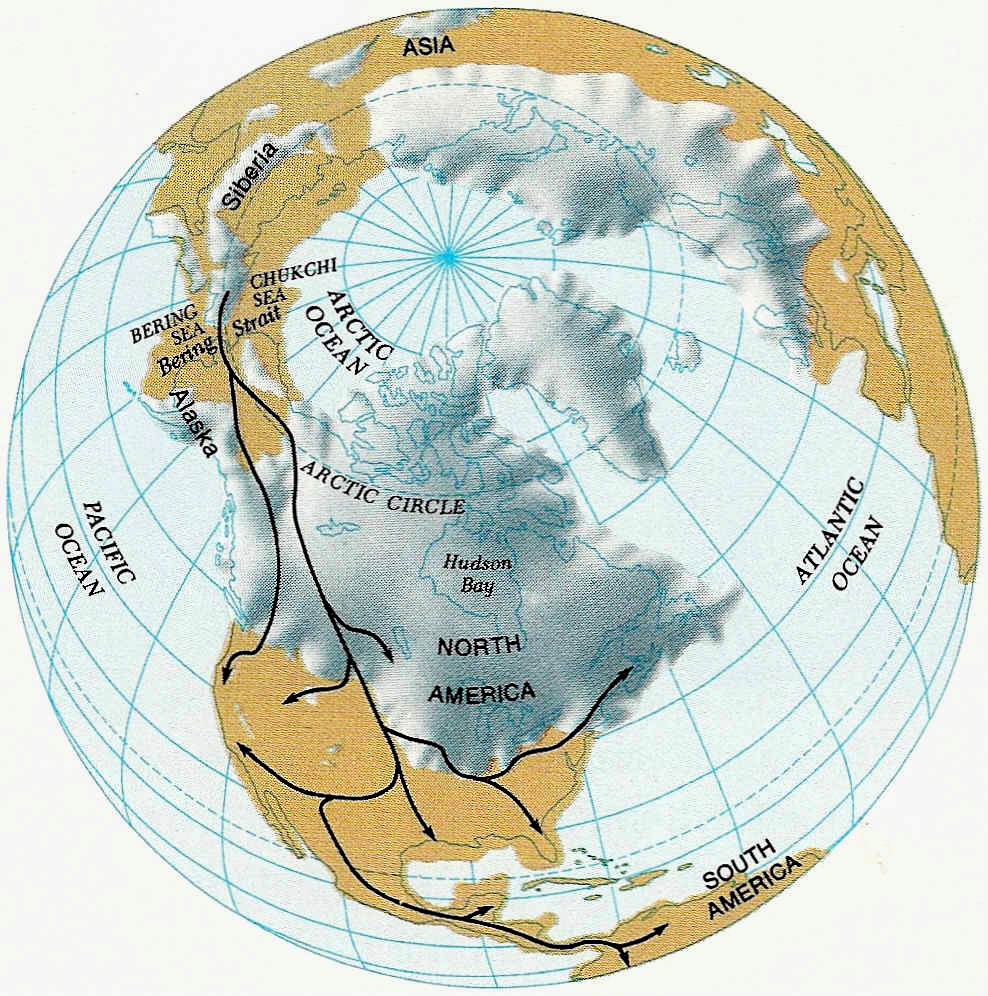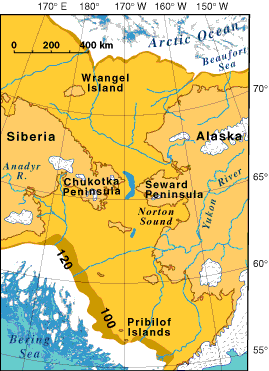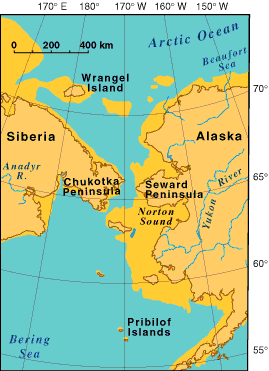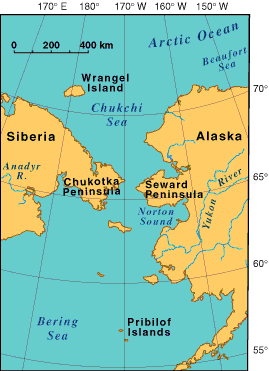
- •Сontents
- •Введение
- •Introduction
- •Unit I. Introductory part
- •1. Fill in the table:
- •2. Study the key vocabulary:
- •3. Scan the text. Political Situation in Russia in the 17th Century and Prerequisites for the Exploration of the Far East
- •4. Answer the following questions:
- •5. Complete the sentences:
- ••Moscow was occupied by ___________________________ .
- •Unit II. Movement to the far east Lesson 1. Expeditions of Ivan Moskvitin and Vasily Poyarkov
- •2. Study the key vocabulary:
- •3. Make up sentences with the key vocabulary.
- •4. Complete the sentences with the correct key vocabulary item:
- •5. Translate into English:
- •7. Scan the table. Analyze the peculiarities of the expeditions. What differences and similar features have you found?
- •9. Explain the meaning of the following expressions from the text.
- •Lesson 2. Yerofey Pavlovich Khabarov: a Successful Commercial Man and “Getter” of Russia
- •1. History test. Choose the correct variant to complete the sentences:
- •2. Read the text and explain the meaning of the word “khabar”. What does the word “khabar” mean?
- •3. Study the key vocabulary:
- •4. Match the following word-combinations with their definitions:
- •5. Make up sentences with the key phrases.
- •6. Scan the table. The Most Important Periods of y. P. Khabarov’s Biography
- •11. Find out about his Amur trip. What other trips did he undertake?
- •12. Explain why his way was shorter and better. Use maps.
- •13. Translate into Russian. Which natural riches of the Far East was Khabarov impressed by?
- •14. On your own. Use the Internet and other resources to find information about the character of y.P.Khabarov. Prove that he was a successful Russian commercial man.
- •15. Read the text and analyze all achievements of y. P. Khabarov. Explain why historians name him the “getter” of Russia.
- •Importance of Khabarov’s discoveries
- •16. Say what impressed you most in Khabarov’s fate.
- •17. Imagine you are a guide-interpreter. Make a presentation about the monument to y. Khabarov. Use the information from the text.
- •Vocabulary:
- •18. Write an essay on the following theme: “The city of Khabarovsk was named so because …”.
- •1. Study the key vocabulary:
- •2. Replace the following words and word-combinations by the synonyms:
- •3. Make up the sentences with the key vocabulary.
- •4. Scan the text and translate into Russian the sentences with the key vocabulary. Semеn Ivanovich Dezhnev
- •5. Answer the following questions:
- •6. Complete the sentences:
- •7. True or false? Write “t” if true, “f”, if false:
- •Part II
- •Vladimir Vasilyevich Atlasov
- •5. Prove that:
- •6. Answer the following questions:
- •7. Fill in the table:
- •8. Look at the map. Speak how the territory of Russia changed in the 17th century due to expeditions of famous Russian explorers.
- •9. Make a presentation about one of five famous explorers of the Far East.
- •1. Study the key-vocabulary:
- •2. Replace the following words and word-combinations by the synonyms:
- •3. Fill in the correct key word or word-combination:
- •3. Make up the sentences with the key vocabulary.
- •4. Scan the text and translate into Russian the sentences with the key vocabulary. Albazin Fortress
- •Lesson 5. Fatal Consequences of the Nerchinsk Treaty
- •Нерчинский трактат
- •9. Replace the following words and word-combinations by the antonyms:
- •10. Complete the following sentences with the correct key word or word-combination:
- •11. Make up the sentences with the key vocabulary.
- •12. Scan the text. Political Situation in the Far East
- •13. Look at the picture by a Chinese artist: “a battle for Albazin between Russian Cossacks and Daurs”. Explain what you see there.
- •14. Answer the following sentences:
- •Unit IV. Peter’s age in the far east
- •Alexey Mikhailovich and Nataliya Naryshkina
- •Alexey Mikhailovich and Maria Miloslavskaya
- •Lesson 6. Development of the Far Eastern Lands by Peter I
- •1. Study the key vocabulary:
- •2. Complete the following sentences with the correct key word or word-combination:
- •3. Translate into English:
- •4. Make up the sentences with the key vocabulary.
- •5. Scan the text. Achievements of Peter I in the Far East
- •6. Answer the following questions:
- •Lesson 7. Okhotsk: the Major Russian Port in the Pacific
- •6. Scan the text. Okhotsk Foundation
- •Lesson 8. Expeditions of Vitus Bering
- •4. Translate into English:
- •5. Scan the text.
- •Vitus Bering
- •6. Answer the following questions:
- •7. Complete the following sentences:
- •9. Translate into Russian:
- •10. Find on map №12 the places:
- •12. Give a summary of V. Bering’s life. Lesson 9. The First Steps to Explore the American Coast
- •1. Study the key vocabulary:
- •2. Explain the meaning of the following key vocabulary:
- •3. Match the words and word-combinations with their definitions:
- •4. Make up sentences with the key vocabulary.
- •5. Translate the sentences into Russian:
- •6. Scan the text. Problems with the Locals during the First Steps to Explore the American Coast
- •6. Answer the following questions:
- •Unit V. Russian america Lesson 10. Political Situation in the Pacific at the End of the 18th Century
- •Influenced the appearance of the new indigenous peoples in America.
- •2. Study the key vocabulary:
- •3. Match the following columns:
- •4. Translate into English:
- •5. Make up sentences with the key vocabulary.
- •6. Scan the text. Russian and American Frontiers
- •7. Answer the following questions:
- •8. Find in the text the sentences with the key vocabulary and translate them into Russian.
- •9. Complete the sentences:
- •Lesson 11. Functions of Russian Trade Stations on the American Shores
- •2. Replace the following words and word-combinations by the synonyms:
- •3. Match the following columns:
- •4. Find the words from the key vocabulary to match the following definitions:
- •5. Make up sentences with the key vocabulary.
- •6. Scan the text. Grigory Ivanovich Shelikhov – the Founder of Russian Business in NorthAmerica
- •7. Answer the following questions:
- •8. Write if the statement is true (t) or false (f):
- •Lesson 12.The Work of the Russian-American Company (rac)
- •Основание Российско-Американской компании
- •Vocabulary:
- •7. Make up the sentences with the key vocabulary.
- •8. Scan the text. The First Russian Joint-stock Commercial Enterprise in America
- •9. Answer the following questions:
- •16. Give a summary of the text.
- •17. A) Scan the table of persons who were the Governors of the Russian American Company. B) Find on map №16 places named by them. Governors of the Russian American Company
- •Lesson 13. Reforms of Nikolay Petrovich Rezanov in Russian America
- •1. Study the key vocabulary
- •9. Answer the following questions:
- •10. Write if the statement is true (t) or false (f):
- •Lesson 14. Decline of the rac and Sale of Russian Estates in America
- •2. Replace the following words by the antonyms:
- •6. Scan the text. Why Were the Colonial Possessions of Russian America Sold?
- •7. Answer the following questions:
- •8. Prove that the territory of Russian America was practically uninhabited.
- •11. Complete the sentences:
- •Исторические факты
- •Vocabulary:
- •Популярные мифы и заблуждения о продаже Аляски
- •1.Утверждается, что в связи с известными нарушениями договора, сделка может быть оспорена и по сей день.
- •3.В российской публицистике распространяется еще один миф, который гласит, что Аляска на самом деле была не продана, а сдана в аренду на 99 лет, но ссср по каким-то причинам не потребовал её обратно.
- •Vocabulary:
- •16. Read the newspaper article. Share your point of view about the perspectives of Russian-American business relations. From Russia with Love: Tunnel to Link Siberia and Alaska
- •Vocabulary:
- •1. What do you know about the settlement of the Amur area in the 19th century? Choose a correct answer to complete a sentence.
- •2. Study the key vocabulary:
- •3. Replace the following words with the synonyms:
- •7. Scan the text. Return of Russia to the Amur
- •7. Answer the following questions:
- •8. Complete the sentence:
- •Lesson 16. Important Discoveries of Captain Gennady Ivanovich Nevelskoy
- •3. Complete the sentences with the word or word-combinations from the key vocabulary :
- •4. Make up sentences with the key vocabulary.
- •5. Scan the text. The Life and Activities of the “Amur Admiral” Gennady Ivanovich Nevelskoy
- •6. Answer the following questions:
- •7. Translate into Russian the sentences with the key vocabulary.
- •8. Think why the first Russian ports at the Amur estuary and Sakhalin were named as Petrovsky, Nikolaevsky, Ilyinsky and Muravyovsky.
- •9. Say if the statement is true (t) or false (f):
- •10. Scan map №17. Describe the rout of the expedition of Captain g.I. Nevelskoy.
- •11. Translate an extract below. Explain what g.I. Nevelskoy guaranteed to the local population.
- •Vocabulary:
- •12. Fill in the table about the life and discoveries of Gennady Ivanovich Nevelskoy:
- •Lesson 17. The Activities of the Governor - General Nikolay Nikolaevich Muravyov- Amursky during His Reign in the Far East
- •2. Replace the word-combinations by the key vocabulary:
- •3. Match the following columns:
- •4. Make up sentences with the phrases from ex.3.
- •5. Scan the text. Nikolay Nikolaevich Muravyov-Amursky* - a Great Reformer of the Russian Far East
- •6. Answer the following questions:
- •7. Translate the sentences with the key vocabulary into Russian.
- •8. Complete the sentences:
- •Lesson 18. The First Raftings of the Russian People down the Amur River
- •5. Scan the text: Measures to Consolidate and Secure the Far East
- •6. Answer the following questions:
- •7. Translate into Russian sentences with the key vocabulary.
- •8. Complete the following sentences:
- •Дважды открытый
- •Lesson 19.Difficult Life of the First Russian Settlers
- •Амурское казачье войско
- •2. Study the key vocabulary:
- •2. Replace the following words by the antonyms:
- •3. Match the following columns:
- •4. Complete the sentence:
- •5. Make up sentences with the key vocabulary.
- •6. Scan the text. Difficult Life of the First Russian Settlers
- •6. Answer the following questions:
- •A) Описание жизни первых переселенцев Николаем Михайловичем Пржевальским
- •Vocabulary:
- •B) The “World's End” Lost in Taiga
- •1. Study the key vocabulary:
- •2. Replace the following words by the synonyms:
- •3. Make up sentences with the key vocabulary.
- •4. Complete the sentences:
- •5. Scan the text: Demand, Design and Importance of the Trans-Siberian Railway*
- •6. Answer the following questions:
- •17. Scan the articles. Prove that these educational institutions played an important role in the designing the Trans-Siberian railway. A)Khabarovsk Railway College of the Ministry of Railways
- •Far Eastern State Transportation University
- •18. Read the text. Speak about the importance of the Amur Bridge for the Far East. Amur Bridge
- •1. Study the key vocabulary:
- •2. Match the following columns:
- •3. Make up sentences with the phrases from exercise 2.
- •4. Translate into English:
- •5. Scan the text: Prerequisites for the Rapid Growth and Decay of Some Far Eastern Territories
- •6. Answer the following questions:
- •7. Translate into Russian the sentences with the key vocabulary.
- •8. Complete the following sentences:
- •The First Freemen of Khabarovsk
- •17. On your own. Use the Internet and other sources to make a list of the most popular honorable citizens of modern Khabarovsk.
- •18. A)Scan the text: Merchants’ Khabarovsk
- •19. Read the text. Династия Плюсниных
- •Vocabulary:
- •Vocabulary:
- •Николай Иванович Тифонтай
- •Vocabulary:
- •Торговый Дом «Кунст и Альберс»
- •Vocabulary:
- •Lesson 22. Contribution of Governors-General to the Development of the Far Eastern Lands
- •Protected person b) maker of somebody’s ideas in reality c)successor
- •5. Scan the text: General - Governorship in the Far East
- •6. Answer the following questions:
- •6. Speak about the Governors-General of Eastern Siberia.
- •7. Study the table. Which Governors-General are familiar to you? Why?
- •8. Explain why the initials of some Governors-General are italicized.
- •9. Read the article about Nikolay Ivanovich Grodekov. Nikolay Ivanovich Grodekov (1843 – 1913)
- •Andrey Nikolayevich Korf (1831-1893)
- •14. Prove that Andrey Nikolayevich Korf was a worthy person and had not got the title of the Honorable Citizen of Khabarovsk in vain.
- •15. Write the translation of the text. Николай Львович Гондатти (1863—1945)
- •Lesson 23. Main Discoveries of Russian Scientists in the Far East
- •In the 19th –20th Centuries
- •Activity of the Priamurskiy Department of the Imperial Russian Geographic Society
- •6. Answer the following questions:
- •7. Translate into English. Исследование Сибири и Дальнего Востока
- •8. Speak about the importance of the scientific research for the development of the Far East.
- •9. Scan the texts. Richard Karlovich Maack (1825-1886)
- •Alexander Fedorovich Middendorf (1815–1894)
- •Karl Ivanovich Maximowicz (1827 - 1891)
- •Plants named after Maximowicz
- •Vladimir Klavdievich Arsenyev (1972 - 1930)
- •Arsenyev’s family home in Vladivostok has been made into a museum. The town of Arsenyev, located in Primorskiy Territory, was named after him. Dersu Uzala
- •Венюков Михаил Иванович (1832-1901)
- •11. Make up a table of scientific discoveries in the Far East.
- •1. Scan the text. The History of Khabarovsk
- •5. Give a key sentence to each paragraph and retell the text.
- •Герб города Хабаровска
- •Vocabulary:
- •11. Have a look at photos of old Khabarovsk on pages 163-171. Can you guess which modern buildings are these?
- •12. Make a presentation or a slide-show about several old and modern buildings of Khabarovsk. Compare them and tell about differences.
- •Lesson 25. The Importance of the Amur River for the Region
- •1. Scan the Statistical Data. Name the peculiarities of the Amur River. Statistical Data:
- •2. Study the key vocabulary:
- •3. Match the following columns:
- •4. Make up sentences with the word-combinations from ex.3.
- •5. Translate into English:
- •6. Scan the text: Amur River History
- •Economy of the Amur Basin
- •Major Amur tributaries are:
- •7. Answer the following questions:
- •8. Translate sentences with the key vocabulary into Russian.
- •9. Write all meanings of the word “Amur”:
- •10. Write the main dates of the Amur history and explain the events:
- •11. Speak about the history of the Amur River.
- •12. Fill in the table about the resources of the Amur River:
- •13. Watch map in the text and map №23. Determine the location of the the Amur River, its tributaties, and cities, located on its banks.
- •14. Read the articles.
- •Viktor Ishayev: “China Threatens Khabarovsk Region with New Ecological Catastrophe”
- •Китай пообещал закрыть все угрожающие загрязнением Амура заводы
- •Amur Needs un Clean-up Aid
- •15. Analyze the articles and make a list of main ecological problems of the river and measures to solve them.
- •16. Write an essay on the following topic:” Father Amur is the River of life in the Far East”. Lesson 26. Far Eastern Federal District
- •1. Scan the information.
- •Statiscical Data:
- •4. Speak about the presence of the Chinese at the Territory of the Far East. Is their presence here really dangerous?
- •5. Read the text. Khabarovsk Territory
- •Description of the flag of Khabarovsk Territory
- •Description of the Coat of Arms of Khabarovsk Territory
- •History
- •Geography
- •Economy
- •Demographics
- •Places Attractive for Tourists
- •Welcome to the Russian Far East!
- •10. Write an essay on the following theme: “What will happen to the Far East in 20 years?”
- •Vocabulary list
- •Appendix
- •Map № 8. Stanovoy Range
- •Map № 16. Russian America
- •Seminar № 2
- •Seminar № 3
- •Old buildings of khabarovsk
- •Reference sources
- •Www.Wikipedia.Org
4. Translate into English:
• Обычно,
на новых землях селились сначала
путешественники,
затем мошенники,
негодяи, должностные лица и, в конце
концов, миссионеры.
Обычно,
на новых землях селились сначала
путешественники,
затем мошенники,
негодяи, должностные лица и, в конце
концов, миссионеры.
•Несмотря на то, что многие народы Дальнего Востока приняли христианство, они продолжали следовать своим обычаям и традициям.
•Чтобы подтвердить свое право на пользование вновь открытыми территориями, на их окраинах быстро возводились крепости и посты.
•Ученые считают, что первые люди проникли вглубь Америки из северных территорий Дальнего Востока через Берингов пролив, который раньше был скован льдом.
•Люди становились враждебными друг к другу из-за недостатка источников пищи.
•Судоходность Амура была доказана во время экспедиции Г.И. Невельского.
•После заключения мирного договора с Китаем началась активизация торговых отношений.
5. Make up sentences with the key vocabulary.
![]()
6. Scan the text. Russian and American Frontiers
Russian and American frontiers met in Alaska. The Bering Strait was a link between the Far East and North America. Scientists think that the first Native Americans originally populated the American continents traveled from Siberia and the Far East to Alaska through a land bridge called “Berengia”. They were the Eskimo people. They wanted to find new places and better food. They were the Eskimo people.



Berengia -Wisconsin glaciation Berengia - deglaciation period Berengia - present day
Russian Alaska attracted a lot of people: adventurers and explorers, merchants and plunderers, scoundrels, and administrators. Missionaries soon followed the traders to convert souls of the natives to Christianity. Russian government officials reached the Pacific Coast only by the mid-1600s, to establish their accommodation right to Alaska in 1741. All those people settled Alaska and gave start to its development.
Russia also established settlements on the Hawaiian Islands and California coast to develop the sea-otter trade.
The Russians came to North America for the same reason they penetrated Siberia. They wanted to find furs and natural treasures. But in Alaska the conditions for Russian businessmen were more difficult than in Siberia. There were not enough provisions in those places. Russian centers with warehouses were located far away. There was a harsh climate. Local Tlingit tribes were well armed and hostile to the Russians. The competition for furs between Russian, British and American trappers and traders was very high.
At the beginning of the 19th century the Russian government undertook one more attempt to solve «the Amur question». In 1805 a Russian ambassador Alexey Golovkin went to China to define navigability of the Amur, and to achieve the sanction to pass at least several Russian vessels along the river annually. It was very important for Russia because the Amur was the shortest and the most convenient way to deliver necessary supplies to Kamchatka and Russian America. But in this case too, Tzin government refused to cooperate with Russia.
In the middle of the 18th century there was a new factor dangerous for both – Tzin Empire and Russia. It was the colonial policy activization of leading world powers: Turkey, France, the UK, and the USA. The USA "idea" of the Anglo-American control over the Pacific Ocean got a great popularity among those countries. The main task of such an Anglo-American union was isolation and weakening of Russia.
The result was that traders from Spain, England and France moved to Russian America and started there different kinds of businesses on a wide scale. They offered the locals various goods, pushing Russian tradesmen out of their own lands. And foreign tradesmen were more successfull because their goods were better. Sometimes Russian trappers had to exchange otter and seal skins for foreign not to starve to death, because the Russian support was minimal and there were no any conditions for business development.
Active penetration of foreign powers into the countries of the Far East could affect negatively the interests of Russia. Russia was left face to face with great foreign powers. The whole world was against it! The fate of the Russian Far East depended only on the wise strategy and policy of the government.
